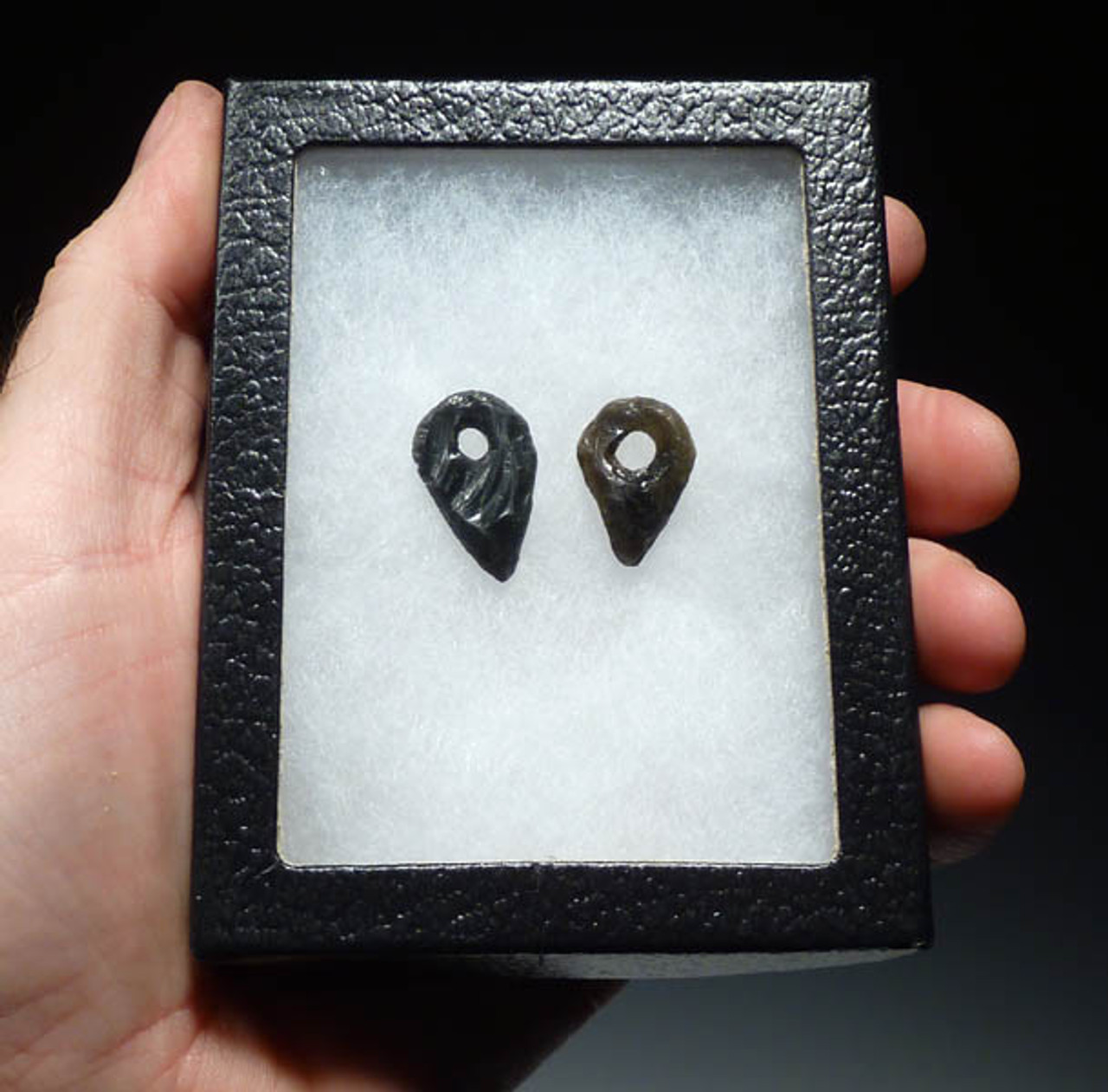Product Description
ITEM #
|
PC011
|
||
ID
|
Appliques
|
||
FOUND
|
Mexico
|
||
AGE
|
200 B.C. - 650 A.D.
|
||
SIZE
|
.85" and .75" long
|
||
CONDITION
|
INTACT WITH NO REPAIR OR RESTORATION
|
||
NOTE
|
RARE AND UNUSUAL!
|
||
INCLUDES DISPLAY BOX - Actual Item - One Only
Comes with a certificate of authenticity / information sheet |
|||
This is a pair of rare and unusual small obsidian flaked objects originating from the ancient Pre-Columbian Indian culture of Teotihuacan in Mexico. They resemble teardrops or raindrops, perhaps votive or ceremonial offerings to the rain god of their time. This is the first time we have seen small pierced obsidian objects like this. They are very rare. It is possible they were worn as a single pendant, sewn into clothing as an embellishment or a part of a larger more elaborate jewelry piece. This is the only pair we have like it and was part of a very exclusive collection of a few different varieties of these objects. Perfect to be used a a modern day jewelry centerpiece such as a pair of matching pendants or earrings, or cherished as an unusual and scarce relic of the mysterious Teotihuacan culture. Original sediment embedded in the hinge fractures testifies to each of these pieces' authenticity. Recommended for collections displaying weapons of the indigenous Central American Pre-Columbian tribes. INTACT AS MADE WITH NO DAMAGE OR REPAIR. Includes our written unconditional lifetime certificate of GUARANTEED AUTHENTIC.
In the first millennium A.D., the central American mega-city of Teotihuacan was THE largest city in the pre-Columbian Americas and had a broad influence on its neighboring cultures both, in simultaneous existence to it and even long after. At its peak in 450 A.D., with an estimated population exceeding 200,000 at this time, it was one of the largest cities in the world. The founders of this great city are a mystery and much debate has circled around who exactly built the city. Because the inhabitants seem to have been multi-ethnic (Nahua, Otomi, Totonac and Mayan) the culture is not attributed to a specific ethnicity or tribe but is called TEOTIHUACAN or TEOTIHUACANO.
Teotihuacan was an enormous industrial city and trading center housing a variety of trades and craftspeople. The quality of artistry in the thousands of mural paintings from Teotihuacan artists rivaled anything that was to be produced by many master painters of Renaissance Europe much later in time. Perhaps, the most famous industry the city was known for was its extensive production of obsidian objects.
Many of the same gods worshipped by other pre-Columbian cultures of the surrounding region were worshipped by the inhabitants of Teotihuacan. Gods such as the Feathered Serpent and the rain god, which were later worshipped by the Aztecs in their own culture. It is believed the Mayans and later period Aztecs, along with many other tribes, were heavily influenced by Teotihuacan and like those cultures, human sacrifice was practiced in Teotihuacan. This is evidenced by numerous human skeletons showing signs of ritual sacrifice, excavated from the sites where the pyramids were built.
The end of Teotihuacan is as much a mystery as its beginning. Most recent studies now show the city's decline began some time around the 6th century A.D. and may have been caused not by a conquering neighbor but by internal civil unrest and uprising.
 US DOLLAR
US DOLLAR
 EURO
EURO
 AUSTRALIAN DOLLAR
AUSTRALIAN DOLLAR
 CANADIAN DOLLAR
CANADIAN DOLLAR
 POUND STERLING
POUND STERLING






